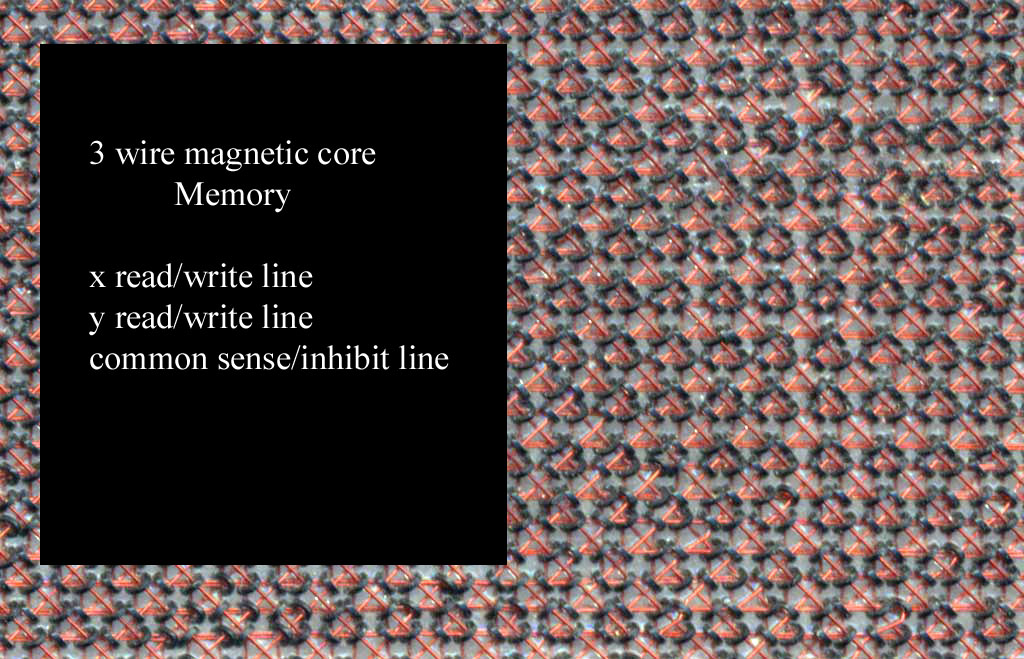| Back to Lenzenhuber Main Page | ||
 |
||
| I worked 35 years for the benefit of the Department of Defense (DOD related career) | ||
 |
||
| My analog computer (1969) | ||
| I programmed my first digital
computer in 1969. (In FORTRAN IV using punched cards utilizing IBM's
Hollorith Code.) I troubleshot and repaired my first digital computer to discrete component level (transistor-diode-resistor level DTL) in 1971. |
||
 |
||
| My first digital computer, hardware wise - the Univac Digital trainer (UDT) (1971) | ||
| I liked the early generation of computers, they were logical. If they didn't follow their low level instructions they were broken. yes/no one/zero Boolean algebra. There wasn't a lot of firmware/software to screw them up. The early Univac shipboard computers used one complement versus twos complement arithmetic (there was a -0) Their word lengths were in octal nor hexadecimal (30 & 18 bit instead of 32 & 16). They employed magnetic core memory with micro second access time. | ||
 |
The computer technology from the 1958 era designed by Seymour Cray. The Navy's CP-642 mainframe was the size of a refrigerator and contained 1000's of 15 pin logic cards and 32K words of core memory |  |
| 2nd generation Univac computer card The first modern computer ENIAC was a first generation electronic digital computer (It used tubes) | ||
 |
The first generation of Navy shipboard tactical computers were actually 2nd generation machines (discrete components) 1st generation used vacuum tubes. The second generation of shipboard computers (UYK-7) used integrated circuits. |  |
| 2nd generation CP-642B (Univac 1212) Mainframe computer | CP642B UNIVAC Technical Description (49 page pdf) | 3rd generation computer card using 14 pin flat pack ICs |
 |
||
| Hughes Aircraft SYA-4 card (modules of discrete components) Nand gates were used to build most the logic including flip flops, instead of schematics the system used mechanization tables. Still second generation, not ICs | ||
| Formal Education | ||
| College classes include: Physics, Chemistry, Calculus, Astronomy, Geology, Archaeology, Fortran IV, RPGII, Pascal | ||
| High School classes include : Earth Science, Biology, Chemistry, Physics, Algebra, Geometry, Trigonometry, Calculus | ||
| US Navy Schools: Two years of comprehensive electronics/computer training with four years of experience applying the training. | ||
| Non Science college classes: Such as English Lit, Western Civilization, American History etc (actually archeology isn't a science it's a humanity) | ||
| Successfully passed college classes in six decades from 1969-2012 | ||
| I have always had a
love and an aptitude for Math & Science. My first love was Astronomy
and I somewhat regret I ended up working for the Department of Defense
instead of NASA. My Navy training gave me a career after my dropping out
of college to deal with the Vietnam draft situation. (Turns out if I had
stayed in and got a 4 year degree the draft would have been over) During
the 70s and 80s the colleges were just gearing up for the future computer
generation and military training and experience was worth as much or more
than a degree. In 1969 Fortran took almost as much work as Physics and
Chemistry and their labs. Those courses were 4 credits, Fortran was 1
credit. I think they thought computers were just a narrow field, being
confined to large organizations such as Governments, Universities and
large Corporations. I still have a love for Astronomy but now have my feet more on the earth with a great interest in Geology. Where I live in the Mojave Desert both are displayed in al their grandeur. (We don't have heavy forests to hide the actual geological formations and the lack of light pollution really brings out the stars. The desert and mountains are dotted with abandoned mines and ghost towns that help fuel my interest in history and Anthropology.) |
||
| A copy of a 1965 training manual for the Data Systems Rate NTDS_Training_1965.pdf (480 page pdf) | ||
| 2020 and I am still playing with computer hardware and software, the newest toys are Raspberry Pi and are providing new learning opportunities | ||
 |
||
| Back to Lenzenhuber Main Page | ||